The Ultimate CPU: Arm Cortex-X925’s Breakthrough with a 15 Percent IPC Improvement
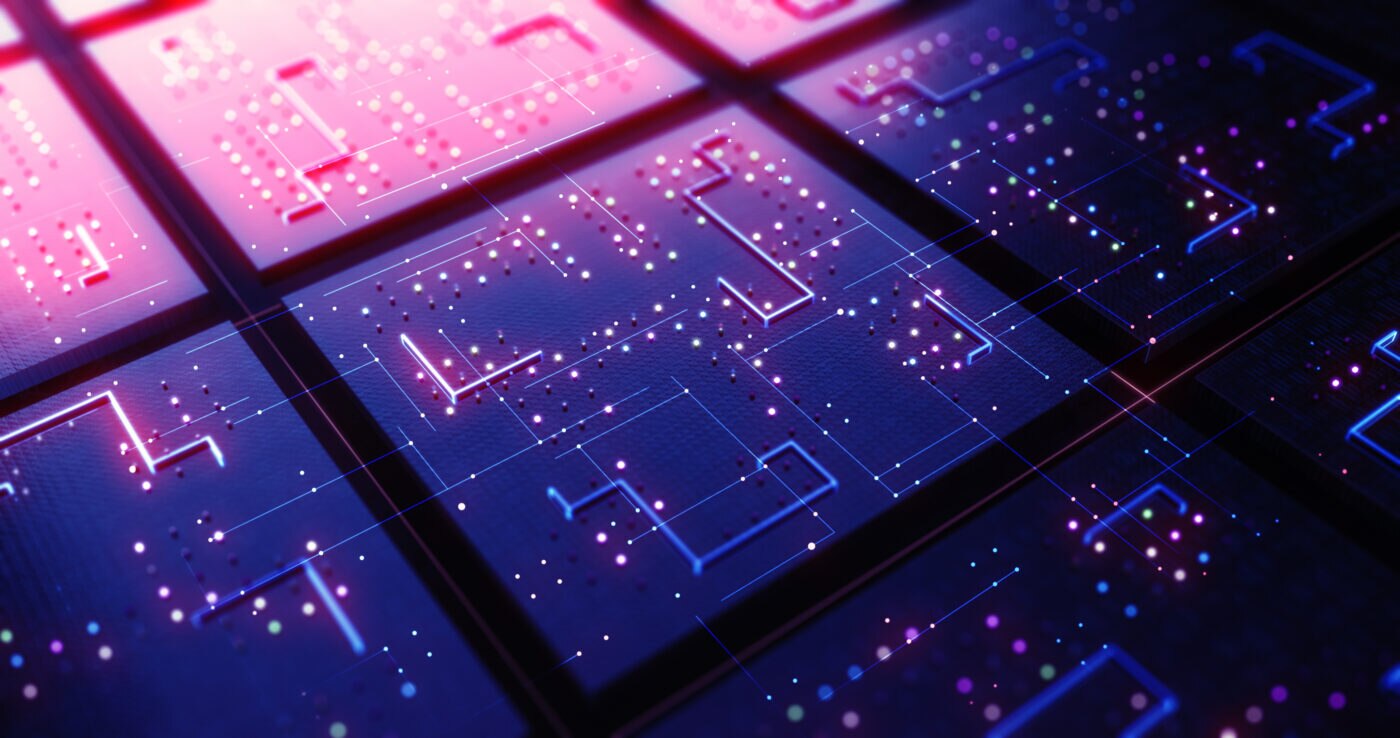
Application performance has become one of the core pillars that drives business success. As technology evolves, the need for high-performance CPUs that ensure optimal user experiences across various applications has become paramount.
The Arm Cortex-X925, based on the Armv9.2 architecture, stands as our most powerful Cortex-X CPU design to date. It achieved a record-high 15% IPC (Instructions per Cycle) improvement on the Geekbench 6.2 benchmark.
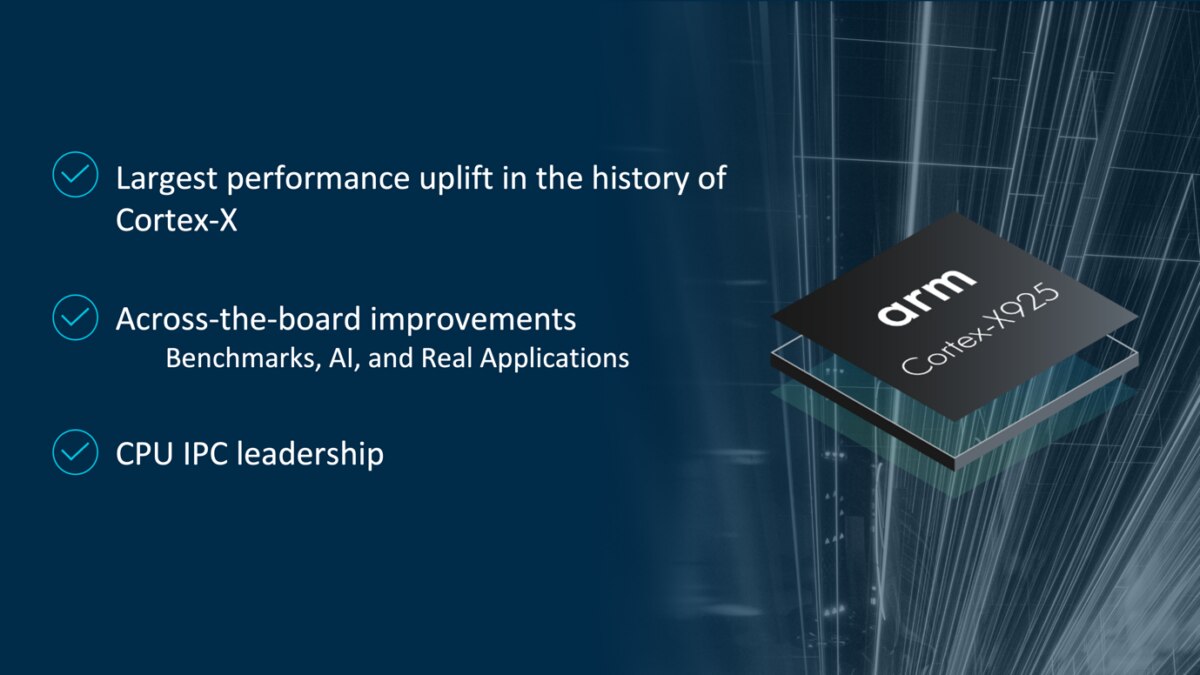
This remarkable performance is not only 1.5 times greater than our previous year-over-year improvement from Arm Cortex-X1 to Cortex-X4 CPUs, but in practice, it will translate into consumers benefitting from real-world performance uplifts, while effectively mitigating overheating issues associated with simply driving higher CPU frequencies.
What is IPC and Why it Matters

IPC is a critical metric for evaluating CPU performance, measuring the number of instructions a CPU can execute per clock cycle. To better understand IPC, imagine a factory where robots assemble complex products. In this analogy, the instructions are the tasks the robots perform to complete a complex calculation, for example, a modern AI algorithm. The clock cycle represents the time for one step in the assembly process.
A factory with a high IPC will have advanced robots performing multiple tasks per assembly line step, and thus make the factory capable of manufacturing more products in a set amount of time. If individual robots are more capable, then a lesser number of robots are needed to achieve the desired output and the factory is likely to be more efficient in terms of electricity usage and capable of manufacturing more products in the same amount of time. Conversely, less capable robots can only perform one task per step in a factory with low IPC, resulting in lower efficiency.
To that effect, efficiency is crucial in consumer devices such as smartphones, laptops, and other mobile devices, where battery life and thermal management are key factors. Improved efficiency means longer battery life, cooler operation, and a better overall user experience.
Armv9-based Cortex-X925: IPC leadership that delivers real performance for real needs
Recognizing IPC as a critical metric for CPU performance and efficiency, the Armv9-based Cortex-X925 focuses on IPC performance uplift to deliver real performance for real-life needs. The CPU design includes an upgrade to the private L2 cache, increasing it from 2MB to 3MB. This improvement significantly uplifts overall CPU performance and power efficiency especially when coupled with Cortex-X925’s ability to prefetch data and complex instructions more quickly and efficiently.
Cortex-X925 is designed for the 3nm process node, the most advanced silicon production technology available today. This targeting of the design means the Cortex-X925 fully leverages the capabilities of the 3nm process to deliver maximum efficiency for sustained compute loads like gaming, but also allows running the CPU at much higher frequencies when needed, resulting in better responsiveness, faster application launch speeds and improved browser performance. Moreover, the vector pipes in the Cortex-X925 deliver a 50% increase in Integer8 Tera Operations Per Second (TOPS), enabling faster response times for AI applications on smartphones.
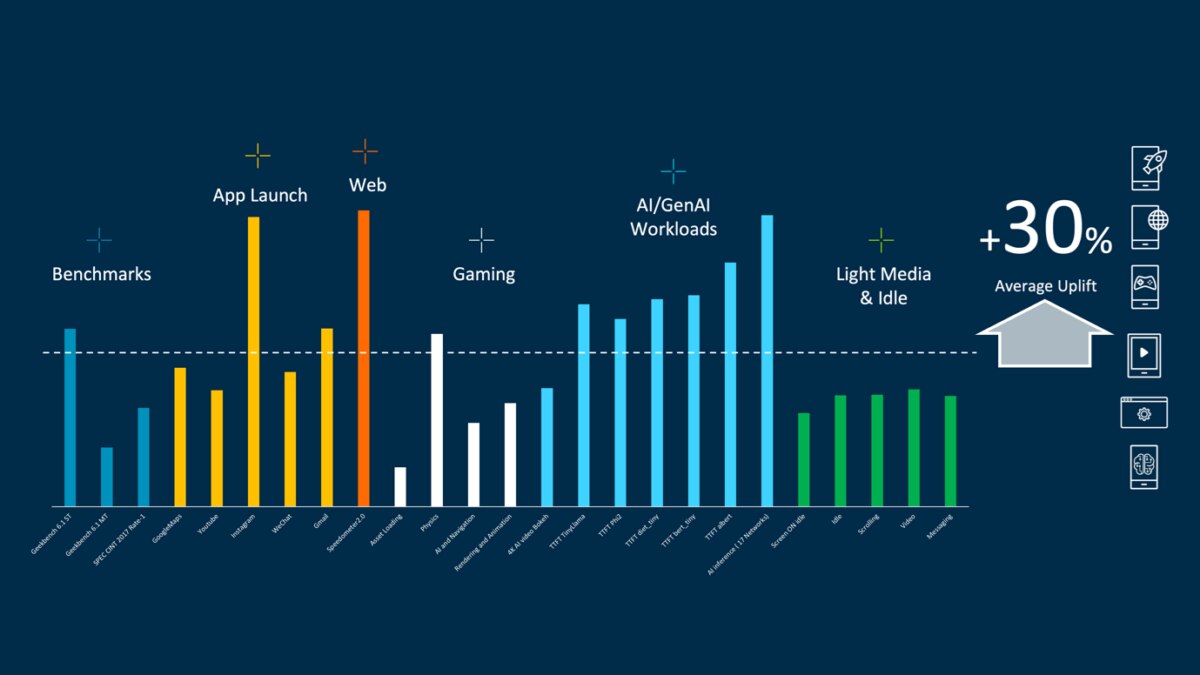
Overall, Cortex-X925 offers consumers an average of 30% performance improvement and efficiency during their daily smartphone usage. This means users can benefit from:
- Faster AI application responses: More precise and quicker responses from AI chatbots.
- Better AAA gaming quality: Smoother and more immersive gaming experiences with enhanced visual quality.
- Quicker app operations: Faster app launches and smoother user experiences.
- Seamless multitasking: Users can listen to music, browse websites, and chat simultaneously without lags.
- Smoother video streaming: Reduced buffering times and smoother playback.
- Faster webpage loading: Quicker reactions when scrolling and switching pages.
- Sustained performance: Users can enjoy longer smartphone usage with stable, sustained power performance thanks to its efficiency.
Cortex-X925 is the ultimate solution to meet the demands of constantly evolving devices and use cases, ensuring that users enjoy the best possible experience. This design significantly increases speed and operational efficiency, particularly for AI applications.
So, how did we achieve this?
The impressive performance of our latest innovation is the result of various architectural changes. With a focus on real consumer usage scenarios, the architecture is designed with three layers in mind:
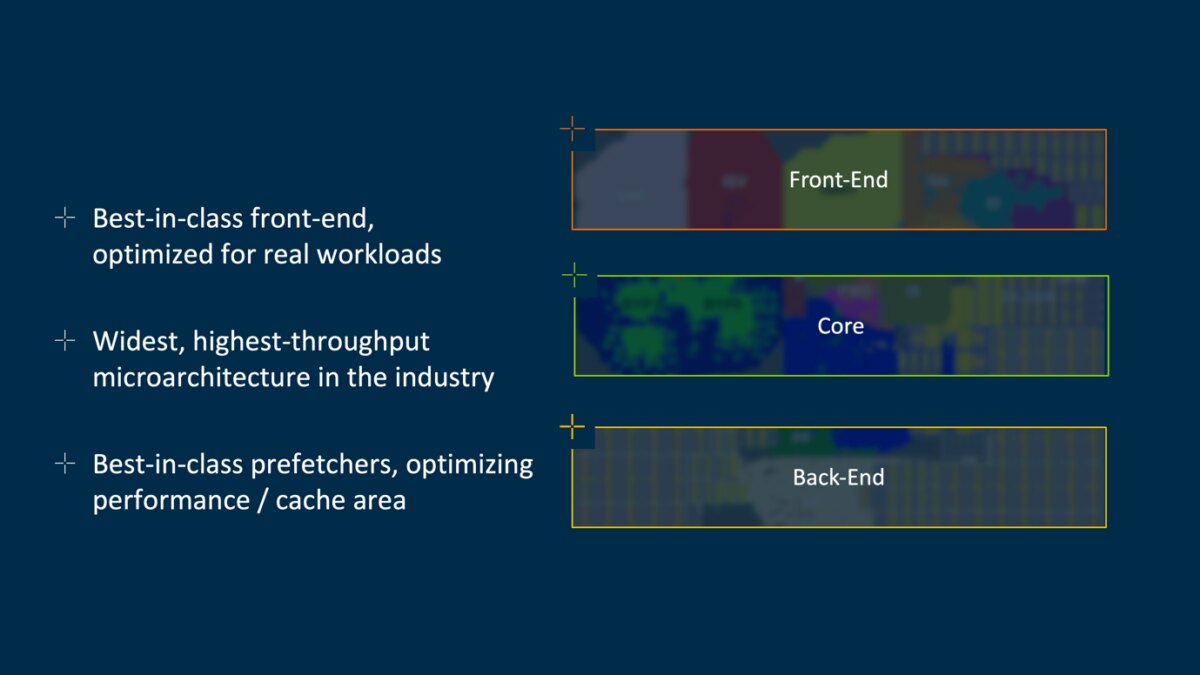
- Front-end: Best-in-class microarchitecture for real applications with complex branch behavior and large instruction footprints. 2x increase in branch prediction and instruction fetch.
- Core: Highest-throughput microarchitecture in the industry, allowing advanced workload performance. 2x increase in max instruction-window capacity to enable a wide microarchitecture depth and avoid latency.
- Back-end: Increased load pipelines from 3 to 4 and enabling 25%-40% backend workload growth and resulting in maximum performance and efficiency.
Exclusive Armv9 Architecture Feature: Enhancing Media Performance and Energy Efficiency with SVE2 Integration
One standout architecture feature of Cortex-X925 is the integration of Arm’s v9 SVE2 (Scalable Vector Extensions). SVE2 expands data-level parallelism across more function domains, enhancing video and photography capabilities by accelerating video decoding, improving camera sensor data processing, and boosting computer vision (CV) pipelines.
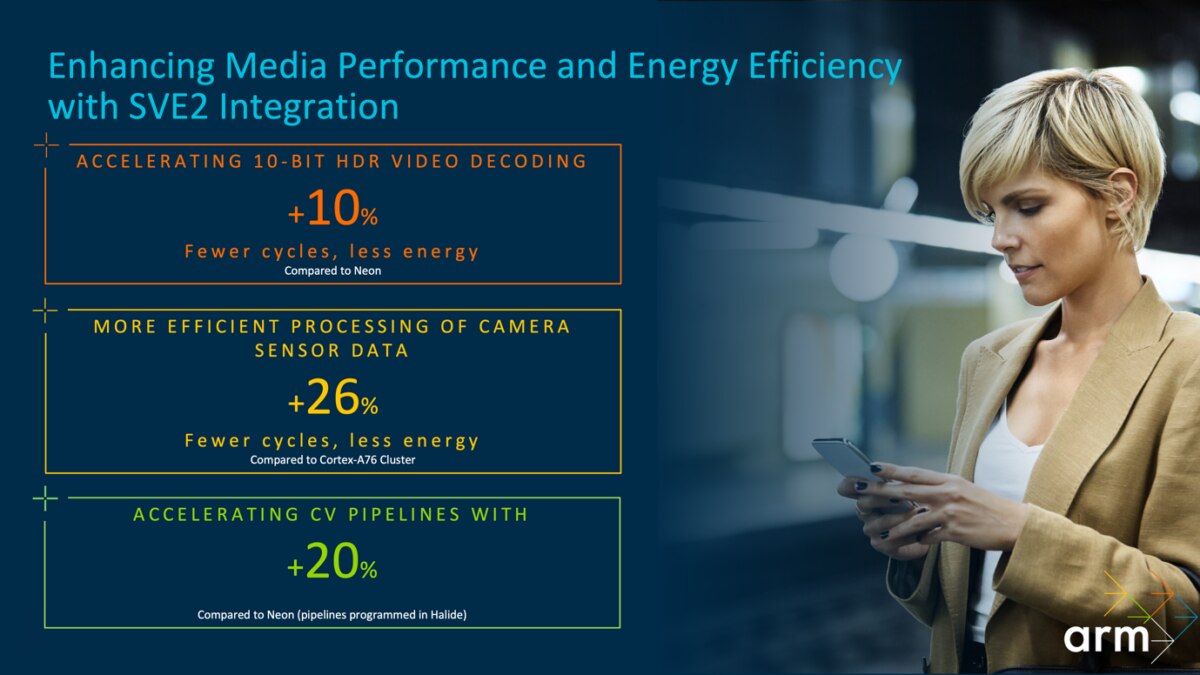
Accelerating 10-bit HDR video decode with 10% fewer cycles and less energy consumption
SVE2 delivers impressive acceleration of 10-bit HDR high-quality video decoding. No matter if it is the VP9 decoding format or AV1 decoding format, SVE2 offers up to a 10% uplift in decoding performance with 10% fewer cycles and 10% less energy consumed. This feature enables consumers to consistently enjoy high video quality with efficient battery performance on platforms such as Netflix and YouTube, as well as reels on Facebook and Instagram.
More efficient processing of camera sensor data with 26% fewer cycles and less energy consumption
By accelerating commonly used image manipulation libraries, SVE2 enhances the smoothness of the user experience during video calls and improved visual quality. This includes better experience on camera rotating, switching, and applying image filters.
Accelerating cutting-edge Computer Vision pipelines by up to 20%
The SVE2 Halide backend allows consumers to enjoy professional-level photography performance on their smartphones. Halide is widely used in smartphone imaging software and thanks to the acceleration provided by SVE2 for its complex computer vision algorithms like small look up tables and dot products, consumers benefit from real-time photo improvements in sharpness, color, tone, and depth of the field, eliminating the need for post-retouching.
The Cortex-X925 is Arm’s most powerful CPU to date
The Cortex-X925, based on the Armv9.2 architecture, sets a new standard in CPU performance with the highest year-over-year IPC uplift in Cortex-X history. Thanks to the latest 3nm silicon process node, the Cortex-X925 achieves significantly higher frequencies, delivering more than a 35% improvement in single-core performance on Geekbench Single Core compared to 2023 premium Android devices. It also delivers over 45% faster time-to-first token for AI applications like Phi-3 compared to the Cortex-X4.
With these advancements, the Cortex-X925 is designed to meet the evolving demands of modern consumer devices, providing consumers with unparalleled performance, efficiency, and user experiences across a wide range of applications.
Redefining AI on Mobile
Join this webinar series to learn more about benefits of the Arm compute platform, including the latest Armv9 CPUs, for AI-enabled mobile devices.
Any re-use permitted for informational and non-commercial or personal use only.












